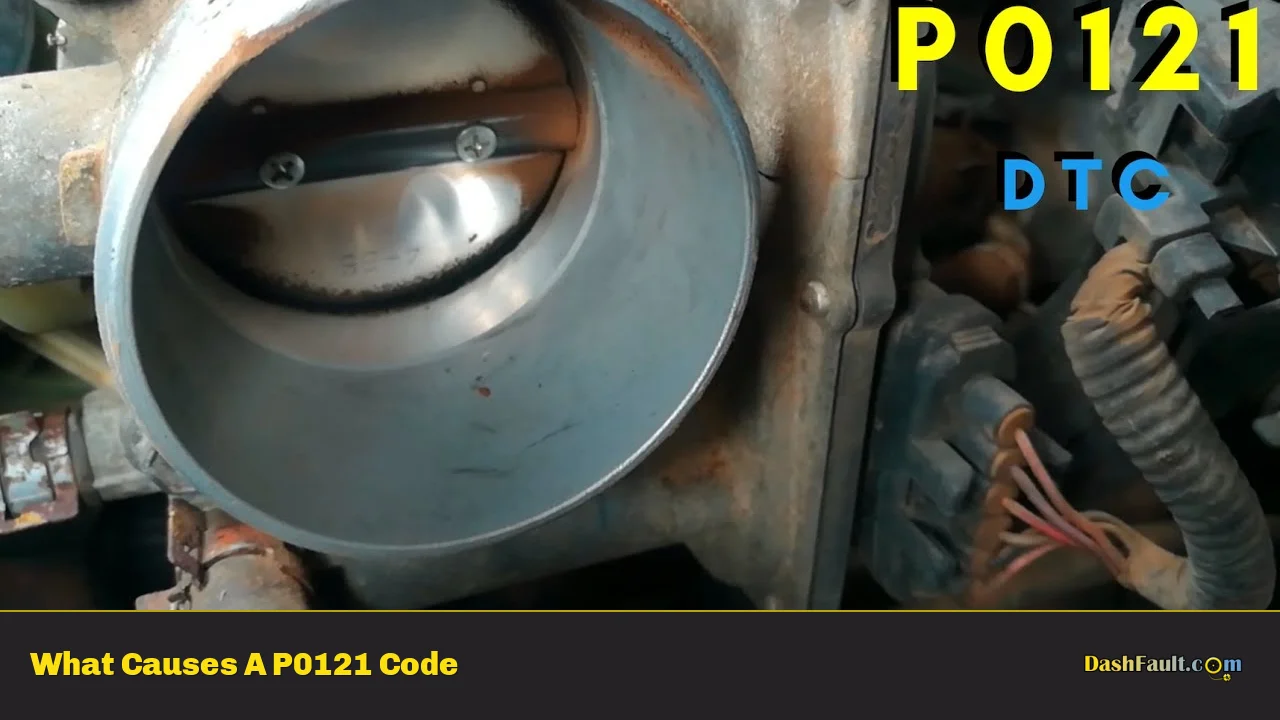Are you experiencing trouble with your car’s diagnostic trouble code P0121? It can be a frustrating issue to have, but don’t worry – with the right knowledge and the help of experienced mechanics, it can be quickly identified and resolved. In this article, we’ll explore the common causes of a P0121 code, how to diagnose it, and how to get it fixed.
Common Causes of a P0121 Code and How to Diagnose it
It’s no surprise that car owners dread the moment their vehicle’s diagnostic trouble code (DTC) P0121 pops up. Although it can be an intimidating issue to face, there are ways to help identify and resolve it. In this article, we’ll take a look at what causes a P0121 code, how to diagnose it, and how to get it fixed.
The most common cause of a P0121 code is a faulty or malfunctioning throttle position sensor (TPS). This sensor is responsible for providing the engine’s control module with information about the throttle’s position, so it can adjust the fuel-air mixture accordingly. If the TPS is not working correctly, the engine’s control module may not be able to adjust the fuel-air mixture properly, resulting in a P0121 code.
To diagnose the P0121 code, a mechanic will need to check the TPS for proper operation. This involves connecting a scan tool to the vehicle’s onboard diagnostic port and checking the TPS readings. If the readings are not within the manufacturer’s specified range, the TPS needs to be replaced.
Once the TPS has been replaced, the mechanic should then clear the P0121 code from the vehicle’s computer and test drive the vehicle to ensure the issue has been resolved.
| Cause | Diagnosis | Solution |
|---|---|---|
| Faulty or malfunctioning throttle position sensor | Connect a scan tool and check the TPS readings | Replace the TPS |
| Other issues | Check for loose or corroded wiring, vacuum leaks, etc. | Repair or replace any faulty parts, as necessary |
Vehicle Malfunction
One of the most common causes of a P0121 code is a malfunctioning vehicle component. This could be anything from a faulty throttle body to a broken coolant temperature sensor. Identifying the specific component that is malfunctioning is the key to resolving the issue.
Wiring Issues
Another potential cause of a P0121 code is a wiring issue. Wiring problems can be caused by anything from a faulty connection to a broken wire. It’s important to check all the wiring in the engine compartment and inspect for any signs of corrosion or damage.
Faulty Computer
In some cases, the issue could be caused by a faulty onboard computer. If the computer is not functioning properly, it can cause a P0121 code. It’s important to have the computer inspected and tested to make sure it is in working order.
Low Fuel Pressure
Low fuel pressure can also cause a P0121 code. Low fuel pressure can be caused by a number of factors, including a clogged fuel filter or a weak fuel pump. It’s important to inspect the fuel filter and fuel pump to make sure they are in good condition.
Damaged Throttle Body
Finally, a damaged throttle body can cause a P0121 code. A damaged throttle body can cause the engine to run too rich or too lean, which can lead to a P0121 code. It’s important to inspect the throttle body and make sure it is in good condition.
When diagnosing the causes of a P0121 code, it’s important to consider all the potential causes listed above. From vehicle malfunctions to wiring issues and faulty computers, a variety of problems can lead to a P0121 code. It’s important to thoroughly inspect the engine and all its components to determine what is causing the issue and how to resolve it. With the help of experienced mechanics, the issue can be quickly identified and resolved, allowing you to get back on the road.
Key Takeaways When Diagnosing a P0121 Code
- Common causes of a P0121 code include a faulty or malfunctioning throttle position sensor, vehicle malfunction, wiring issues, a faulty computer, low fuel pressure, and a damaged throttle body.
- To diagnose the P0121 code, a mechanic will need to check the TPS for proper operation and replace it if the readings are not within the manufacturer’s specified range.
- It is important to consider all the potential causes listed when diagnosing the issue and thoroughly inspect the engine and all its components to determine what is causing the issue and how to resolve it.
- With the help of experienced mechanics, the issue can be quickly identified and resolved.
Summary: Diagnosing a P0121 Code
When diagnosing a P0121 code, it is important to consider all potential causes and thoroughly inspect the engine and all its components. Common causes of a P0121 code include a faulty or malfunctioning throttle position sensor, vehicle malfunction, wiring issues, a faulty computer, low fuel pressure, and a damaged throttle body. To diagnose the issue, a mechanic will need to check the TPS for proper operation and replace it if the readings are not within the manufacturer’s specified range. With the help of experienced mechanics, the issue can be quickly identified and resolved, allowing you to get back on the road.
https://www.youtube.com/watch?v=1f-gnjnhU9Q
